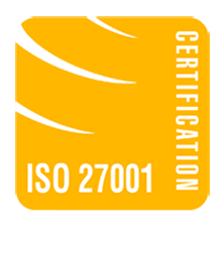
Navigating Stock-Outs: Insights from Flowlity's Head of Customer Success
In the intricate dance of supply chain management, the specter of stock-outs looms large, casting shadows of missed opportunities and operational inefficiencies. To navigate these challenges effectively, we turn to the expertise of Lukas, the Head of Customer Success at Flowlity. With a wealth of experience in supply chain dynamics, Lukas offers invaluable insights into understanding and managing stock-outs effectively. Join us as we explore Lukas’s perspectives, delving into practical strategies for optimizing supply chain operations and maximizing ROI.
How does the definition of stockout vary across different industries and roles?
Lukas’s Response: “The term ‘stockout’ specifically refers to the complete absence of stock. However, a ‘shortage’ implies that the existing stock is insufficient to meet demand, which is a broader issue. For example, a stockout might not impact a business if there is no immediate customer demand for the item. Conversely, having limited stock might still result in a shortage if it does not meet a larger customer order. In retail, the presence of items on shelves directly affects sales, whereas in manufacturing, a stockout might delay production but allows for adjustments in production schedules. Furthermore, the importance of certain KPIs can vary by industry and role. For instance, retail managers might prioritize stockout ratios because visible inventory drives sales, whereas manufacturing managers might focus on the availability of raw materials for production schedules. Ideally, operational and directorial roles should monitor the same KPIs to ensure alignment across the organization. Defining consistent metrics to track product availability is crucial, as discrepancies can hinder effective decision-making and alignment in actions across different management levels.”
What methods are used to calculate stockouts? How were supply chain professionals managing this before implementing AI-based planning tools?
Lukas’s Response: “Before AI based planning tools, supply chain professionals often struggled with implementing reliable metrics for stock outs. One common method involved is tracking back orders, which are orders that have not been fulfilled and are thus in the backlog. For example, if a customer visits a store and the desired product is not available, they may place a back order to be notified when it is available. This backorder is tracked in the ERP system, providing an indication of how many items were out of stock that should have been in stock. In a manufacturing context, if a production team is unable to produce a product due to a lack of raw materials, this also results in a back order. Often, companies enhance their tracking by flagging the root causes of these back orders, such as raw material shortages or equipment failures, to facilitate deeper analysis and responsive actions. Another approach is to calculate the stockout ratio by reviewing the days a product was unavailable over a given period, such as a month. For instance, if a product is out of stock for 10 out of 30 days, the stockout ratio would be 30%. This method helps businesses understand the extent of stock availability issues.”
Can you provide examples of how these formulas are applied? How do you apply them to your business?
Lukas’s Response: “After calculating stockout metrics, the crucial next step is making these metrics actionable within your business processes. For instance, when a stockout occurs, several scenarios might unfold. These could be due to process issues, such as a key staff member being absent without a backup, or a system failure where the ERP system fails to recognize an order. Additionally, the issue might stem from unexpected demand spikes or supply chain disruptions, such as a supplier failing to deliver due to unforeseen circumstances like a factory fire or transportation issues. To effectively use these KPIs, it’s essential to have a robust system in place to analyze the data and diagnose the root causes. This involves looking into your forecast methods and demand management processes to identify whether these align with actual operations. For example, if the marketing team launches a promotion that the supply chain team isn’t aware of, it could lead to discrepancies in stock levels. Similarly, understanding the reliability of your suppliers and having contingency plans for supply chain disruptions are crucial. Therefore, the application of these KPIs extends beyond merely tracking numbers; it involves a comprehensive analysis of processes, demand forecasts, and supply chain management. By integrating these insights, businesses can not only address current issues but also refine their strategies to prevent future stockouts. This approach ensures that KPIs contribute meaningfully to operational improvements and business growth, rather than serving as mere statistical reports.”
How are service levels defined in the context of stock availability?
Lukas’s Response: “Defining service levels in relation to stock availability is inherently customer-focused, centering on the ability to fulfill customer requests effectively. A key metric we use to measure this is ‘On-Time In-Full’ (OTIF), which assesses whether customer orders are satisfied both in quantity and within the agreed timeframe. For example, if a customer orders 100 units with a requested delivery by the first of May, and only 50 are delivered on that date with the remainder delivered much later, then the service level has not been fully met. This partial fulfillment reflects poorly on both stock management and customer satisfaction. Furthermore, OTIF helps quantify how often an organization manages to deliver the complete order quantity on the agreed delivery date. However, different businesses may adjust the strictness of this metric to better fit their operational realities and customer expectations. For instance, a slight delay such as delivering the next day might still be acceptable in some contexts, allowing businesses some flexibility based on their specific service agreements and customer sensitivity to delays.”
What is a good frequency to track these KPIs?
Lukas’s Response: “The frequency for monitoring KPIs should align with the business’s operational velocity. For fast-paced environments, a weekly review might be necessary, while in more stable industries, monthly or quarterly reviews could be more appropriate. This ensures that the data remains relevant and actionable without overwhelming the management processes.”
How are stockouts and overstock managed to ensure a balance of stock? Is service level tied into this?
Lukas’s Response: “Balancing stockouts and overstock effectively hinges on the strategic management of safety stock, which serves as a critical buffer against supply chain uncertainties. The concept of safety stock is at the philosophical core of supply chain management—it’s about managing the inherent unpredictability of both supply and demand. By using KPIs and insights gathered from stock levels and service performance, businesses can make informed decisions about the appropriate levels of safety stock needed to maintain operational efficiency without excessive inventory costs. Service levels are directly tied to this balance because they reflect how well a company meets customer demand under varying stock conditions. A well-managed safety stock ensures that even when forecasts are off or supply disruptions occur, the impact on service levels is minimized. This management strategy allows businesses to maintain high service levels by ensuring products are available when needed, thus preventing both customer dissatisfaction due to stockouts and financial losses from overstock. Ultimately, the goal is to harmonize stock levels with market demand, ensuring that the business can respond flexibly and efficiently to both expected and unexpected changes in the supply chain. This approach not only optimizes inventory management but also supports a high level of customer service, creating a synergy between inventory control and customer satisfaction.”
Conclusion
As we conclude our journey through the intricacies of stock-out management, Lukas’s insights serve as a guiding light for supply chain professionals navigating the complexities of modern commerce. From defining stock availability metrics to balancing stockouts and overstock, Lukas’s expertise illuminates pathways to operational excellence. By embracing these insights and strategies, businesses can forge resilient supply chains, ensuring seamless operations and bolstering customer satisfaction.

E-commerce, Ecology, and Continuous Improvement
Explore the economic impact of poor retail inventory management & a French law on unsold goods, with e-commerce’s ecological shift.

E-commerce trends: Tips by Jeremie Serout!
What are the latest e-commerce trends and best practices in e-commerce? Jérémie Serout, Sales Manager at parcelLab is sharing tips and customer stories with us!

Convenience and the E-commerce Supply Chain
Explore how the e-commerce landscape has evolved, driven by increasing complexity, rising consumer expectations, and global competition.

